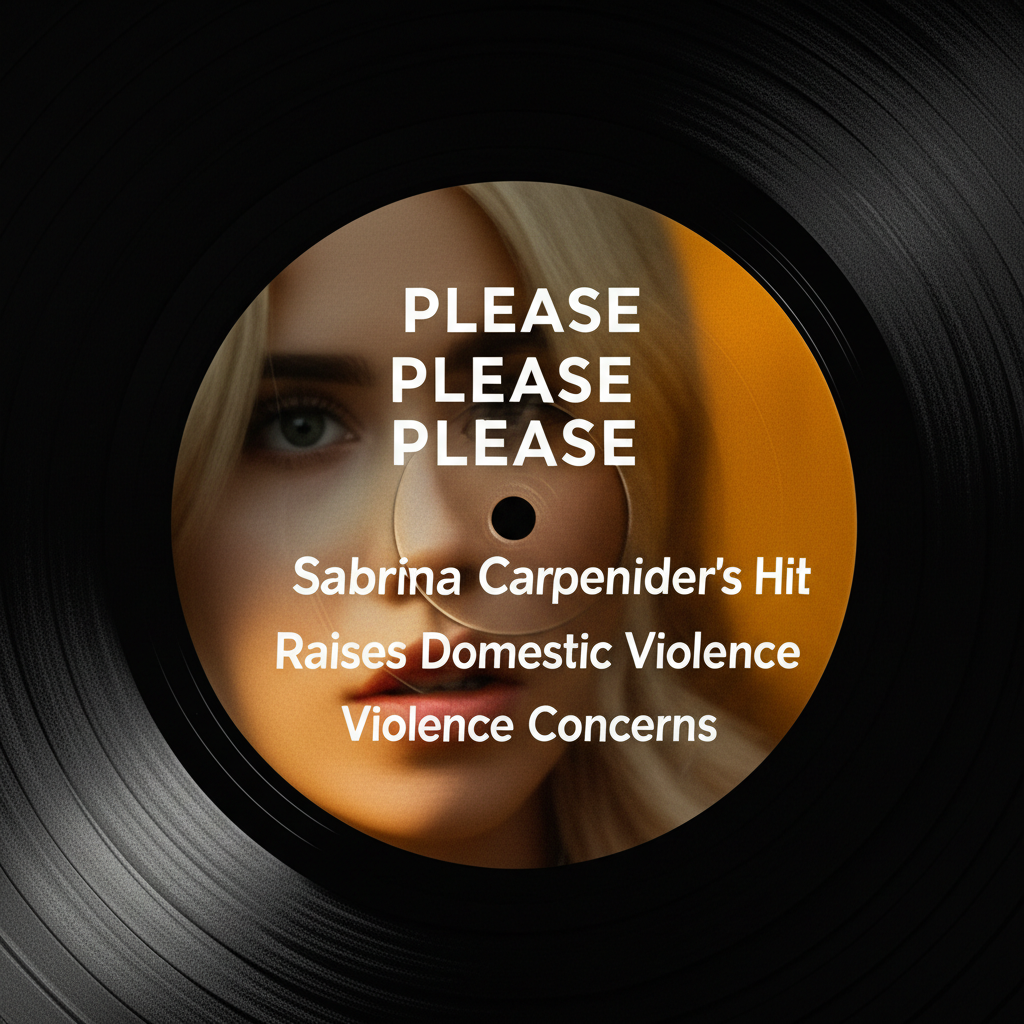"Please Please Please": Sabrina Carpenter's Hit Raises Domestic Violence Concerns

Sabrina Carpenter's latest single, "Please Please Please," featuring her real-life boyfriend Barry Keoghan, has quickly climbed the charts, but not without stirring controversy While the song’s catchy melody and Carpenter's signature wit have resonated with many, its accompanying music video, which depicts a tumultuous relationship culminating in Keoghan's character being arrested multiple times, has ignited a debate about the glamorization, or even trivialization, of domestic violence The song's lyrics, seemingly pleading with a partner to avoid criminal behavior to prevent the singer's embarrassment, have been interpreted in various ways, from playful irony to a more troubling acceptance of potentially harmful behavior The music video opens with Keoghan's character being released from prison, greeted by Carpenter Throughout the video, Keoghan engages in reckless and potentially illegal activities, leading to repeated arrests
Background
Carpenter's character consistently bails him out, pleading with him to “please, please, please” not bring further attention to their relationship While presented with a certain comedic flair, the underlying theme of repeated lawbreaking and the potential for an abusive dynamic has drawn criticism Some viewers argue that the video normalizes a situation where a partner enables criminal behavior, potentially leading to a cycle of abuse “The concern isn’t necessarily the violence depicted, but the context,” explains Dr
Emily Carter, a clinical psychologist specializing in domestic abuse.
“The music video presents a scenario where the woman is constantly cleaning up the man’s messes, implicitly encouraging his behavior by bailing him out This can be a dangerous message to send, especially to young audiences who may not fully grasp the complexities of unhealthy relationships Carter added, "Art can reflect reality, but it also has the power to shape perceptions
Responsibility lies in creators being mindful of the messages they convey.
Furthermore, critics point to the potential insensitivity of releasing such content in a climate where awareness of domestic violence is increasingly prominent
Campaigns like #MeToo have brought significant attention to the issue, and many feel that the music video undermines these efforts by presenting a lighthearted take on a serious subject
However, some defenders of the video argue that it is simply a work of art, not intended to be taken literally
They suggest that the comedic elements are meant to be satirical, highlighting the absurdity of enabling harmful behavior rather than endorsing it The controversy surrounding "Please Please Please" highlights the delicate balance between artistic expression and social responsibility
While artists have the right to explore complex and even uncomfortable themes, they also have a responsibility to consider the potential impact of their work The debate surrounding Carpenter's music video serves as a reminder of the importance of critical engagement with media and the need for ongoing conversations about issues like domestic violence Looking ahead, the long-term impact of the controversy remains to be seen It could spark further conversations about the portrayal of relationships in popular culture, leading to more nuanced and responsible depictions
Alternatively, it could simply fade from the public consciousness, becoming another example of a fleeting controversy in the entertainment industry Regardless, the discussions surrounding "Please Please Please" underscore the power of music and visuals to influence public opinion and the importance of fostering media literacy among audiences of all ages The success of the song commercially will also influence how record labels and artists approach similar themes in the future It will be interesting to see if Carpenter addresses the controversy directly in future interviews or social media posts
Ultimately, “Please Please Please” is more than just a pop song; it’s a cultural artifact that reflects and shapes our understanding of relationships, responsibility, and the complex interplay between art and reality The differing interpretations of the song and video demonstrate that art is not a passive experience but an active dialogue, inviting viewers to engage critically and reflect on their own values and beliefs
